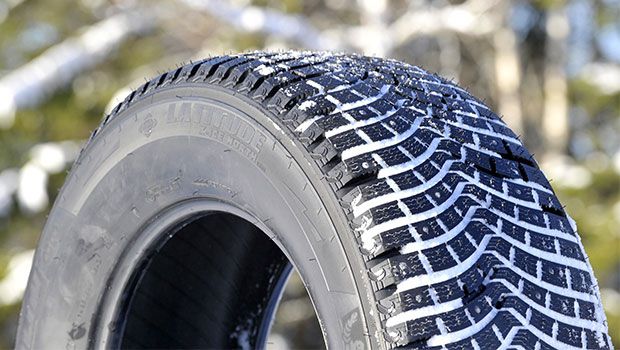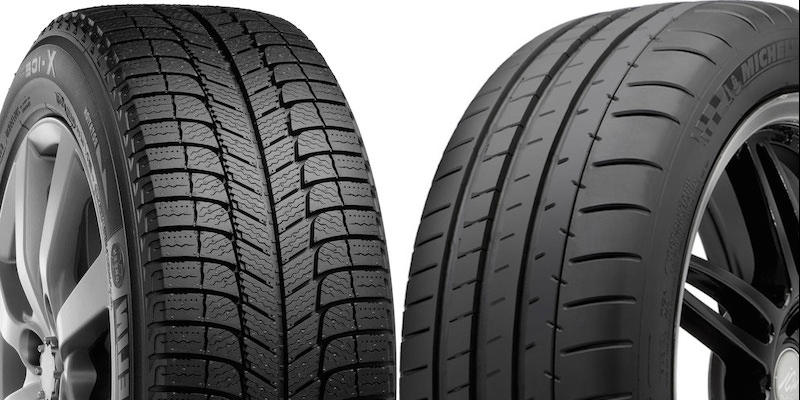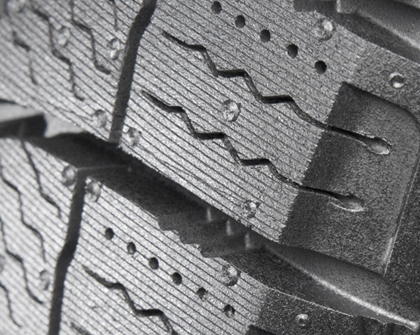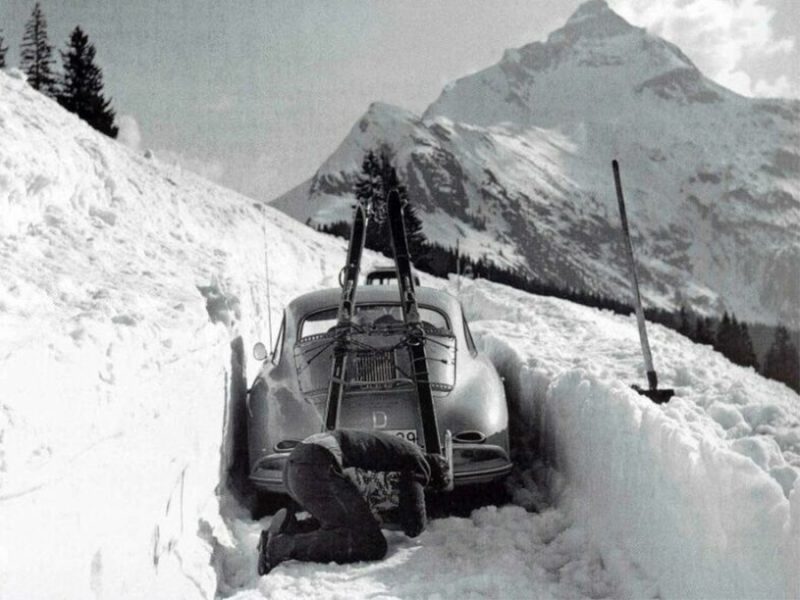Parting with summer tires is a challenge every year. I try to put off swapping from my summer rubber ’til the last possible moment. As a Northeasterner snow tires are de rigueur from late October through at least the end of March. On the surface the switch from quiet, grippy, summer rubber to winter tires often doesn’t seem worth it until the snow starts flying (especially since I personally tend to run fully studded snow and ice tires). Though as our sponsors at Michelin remind us, the benefits of winter tires extend well beyond snow and ice.
Difference Between Summer and Winter Tires
Winter and summer tires are tremendously different from each other, and many of the differences are not apparent to the naked eye. One of the most important factors which separates the two is known as the “Glass Transition Temperature”. The glass transition temperature is the temperature where the molecules in the rubber move less freely, causing the tire to generate less grip because it is less pliable. A high performance summer tire delivers maximum performance at a relatively high temperature, driven by both ambient temperatures and the heat generated by friction. In order to achieve these characteristics the molecules within the tire compound tend to move much, much less at lower temperatures in order to achieve better grip at higher temperatures. Because of this, any time the temperature drops below 40-45 degrees Fahrenheit a summer tire generates much less grip than it does at higher temperatures.

Temperature is Critical
At 40-45 degrees snow and ice are largely out of the picture, but a summer tire will offer less than optimal performance (as little as 10% of it’s true performance capabilities). The tread compounds in winter and all-season tires are designed to operate at significantly lower temperatures. The compounds in winter tires in particular are designed to operate well below freezing. Even if your region doesn’t get much snow, your Porsche will benefit from a winter tire if conditions are consistently too cold for your summer rubber.

Tread Design Plays a Big Role
The rubber compounds are just part of a winter tire’s advantages in winter weather. The design of a good winter tire has numerous other features for improved grip on less than optimal surfaces. The first and most obvious difference between winter and summer tires is the size and shape of the tread block. Compare the Michelin X-Ice above to a Michelin Pilot Super Sport
. Note the large number of relatively small, separate tread blocks on the winter tire. Contrast this to the large, often continuous blocks on the summer tire. The tread blocks are also substantially deeper, allowing the tires to collect snow (snow actually grips to snow quite well).

Viewed up close the increased tread depth can be seen more easily. These tall, small tread blocks are less stiff than their summer counterparts. Though this will lead to a less responsive feeling through the steering wheel, the tradeoff is increased grip in challenging conditions. Winter tires also have zig-zag sipes cut into each tread block. In the Michelin X-Ice, pictured above, these sipes are nearly the full depth of the tread block. This increased subdivision of the tread offers increased surface area for gripping snow and ice.

Safe winter driving habits and appropriate tires are both important to having a successful winter at the wheel of your Porsche. To get the most out of your Porsche in the winter, whether you have AWD or two wheel drive, a set of snow and ice rated tires will go a long way..
